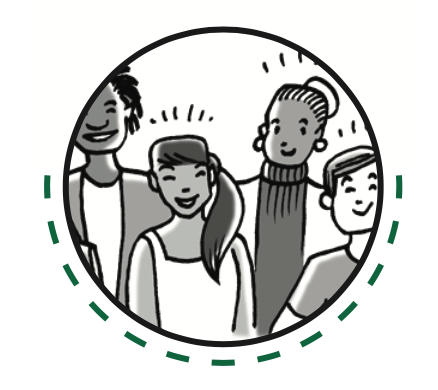Leah Gaines, Blacklick, OH, leahgaines@cpm.org
Stephanie Castaneda, Round Rock, TX, stephaniecastaneda@cpm.org
In our last article, we encouraged you to set a new year’s resolution. We also suggested a few ideas, such as improving STTS and assessment practices. How is it going? Do not be discouraged by slow progress. Push forward and lean on your colleagues for support. We believe in you and know you are making a difference already. Tweet your successes, struggles, and/or concerns @CPMmath.
What if you have not committed to a new year’s resolution? Consider a mid-semester resolution. Your commitment to try something different can start at any time. Here are a couple of resolutions to consider.
I resolve to use more vertical non-permanent surfaces (VNPS).
A great complement to your student-centered learning environment is VNPS. Vertical work surfaces include but are not limited to dry-erase boards affixed to classroom walls, walls painted with dry-erase paint, moveable dry-erase boards, classroom windows, or any vertical surface that can be wiped clean easily.
Getting funds, equipment, and permission to affix dry-erase boards along the entire perimeter of a classroom can be time-consuming and expensive. A less expensive and immediate option is to hang laminated butcher paper around your classroom. This is not a long-term solution, but it is a great starting point. Use VNPS with your next Gallery Walk, Huddle, Teammate Consult, or any team activity. Yes, NP stands for nonpermanent, so how might you collect classwork? When necessary, teams take pictures and upload their work to a learning management system such as Google Classroom.
Vertical work spaces allow students to get out of their desks to collaborate. Math and movement is an underutilized combination in many secondary schools. VNPS is a simple way to incorporate movement into the classroom, and over time you will find students are more engaged and focused.
I resolve to use Math Talks.
Number Talks, Dot Talks, Which One Doesn’t Belong? and How Many? are a few examples of Math Talks. These are simple wide threshold, high ceiling practices that get students of any grade or ability level discussing their mathematical thinking. Math Talks align with CPM’s values of creating a safe learning environment where all students have a voice. They also spur math discourse, build vocabulary, and foster math confidence in your students.
You can use Math Talks at any point during a lesson, but they have the greatest impact at the start of class to get students primed for the day’s activities. Another great thing about Math Talks is they require little to no prep. Simply project or sketch one on the board in your classroom and get rolling!
The important thing to remember when trying something new in your classroom is to start small and manage your expectations. Maybe you commit to try each of these practices once before the end of the year, or commit to making them part of your weekly routine. Either way, you are taking the steps to foster confident students in an inclusive classroom.
Remember, focus on mastery over time. Try VNPS or Math Talks once, and then discuss the pros and cons with your colleagues. Get advice from others and share your advice with others. Then try incorporating them again. Collaborate, practice, make mistakes, revise, and repeat!
